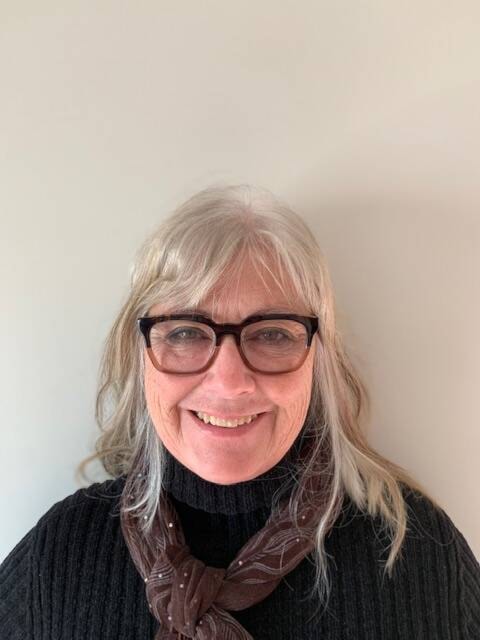Linda Stevens and her husband first passed through Terrace 30 years ago when they were on a holiday. Charmed by the scenic beauty of the area, the couple remarked how enviable the lives of northwesterners must be. Little did she know back then that somewhere in the future, she would herself have an enviable northwest address.
Two months ago, Stevens moved to Terrace as the city’s social development program coordinator, a new position to which she brings over 30 years of experience. Stevens moved to northwest B.C. from Peace River, Alta., and has worked in Ottawa and Kingston, Ont., in different community development roles.
Stevens (LS) spoke to the Terrace Standard and shared her first impressions of the city, her background and the plan going forward. Below is an edited excerpt from the conversation:
Q: Are you enjoying living in Terrace, have you had an opportunity to explore the outdoors yet?
LS: My husband and I, we’re downhill skiers. That’s right at our doorstep, so that’s really fortunate and I have hiked some of the trails. Not nearly as many as I want to, but I’ve been hiking. You’ve got everything within your reach. You can hit the coast within an hour and a half, you can hit the mountains within minutes. You know, everything is great here and it’s absolutely gorgeous. And I have to say that as far as a community goes and feeling welcomed into a community, Terrace has been incredibly welcoming.
Q: Tell us about your background and how you started working in community development
LS: I started working in community development with community health in Ontario and fell in love with that kind of work because it’s working to communities of partnerships and trying to bring people together to decide what needs to be done in the community and how to work collectively to get there. It was just the sort of work that was around social equity and justice and community health and looking at all the determinants of health and it’s just the sort of work that I felt very impactful within and I felt like a lot of enthusiasm for that sort of work because I felt like a lot of the work was trying to address things before everything was falling apart. So that’s sort of where I ended up working in that kind of field.
Q: So based on your background this was a tailor-made job for you?
LS: I saw the job description first and was incredibly excited reading it before I actually looked at where it was. And then I looked at where it was, and it was interesting [Stevens’ daughter moved to Terrace a couple years ago]. I thought, it’s perfect. It’s the type of job that I felt a huge enthusiasm when I was reading the posting. My background, my experience, it absolutely fit where I was wanting to go and return to in my career.
Q: In your role as the social development coordinator what are some of the observations you’ve made so far?
LS: When I came to the position, my understanding of what the city was looking for was some of those things that have been successful elsewhere. B.C. has a number of small cities which have social development programs in some way, shape, or form … And I think the difference is that a lot of the issues that Terrace is now challenged with are newer to Terrace than they are to other communities. In the other communities we’re seeing some of the challenges earlier than Terrace, because Terrace, where it’s situated, is a little bit backwards in certain things. And then industry – there was a rapid growth in industry – and other issues like mental health challenges and the opioid poisoning crisis, just kind of proliferated everything … So all of a sudden Terrace was getting a lot of pressure really quickly. There were a lot of leaks forming quickly. And they were trying to figure out how to stop those leaks while trying to clamp, which is a hard thing to do for a community to put all back together.
I was coming in with an understanding that there were huge pressures and I was sort of getting that narrative of ‘nothing is being done’. And then I came into the community and started meeting with organizations and with community members and staff within the city and I found out that an awful lot is actually being done in Terrace.
Terrace is an incredibly fortunate community in terms of having a lot of really passionate organizations that are partnering and working really well together. But they’re tired and you can feel that when you’re meeting with organizations. You can feel the frustration within the business community and within the organizations. Because when you’re trying to work so quick to plug those leaks, it’s exhausting because that’s where all your energy goes.
Q: Going forward what are some of the projects you have in the pipeline ?
LS: I am presently mapping the assets (community supports and services) that exist in Terrace. This is one of the key activities … firstly because we want to ensure that updated and accurate information on what there is and where available to improve quality of life and wellness for the citizens of Terrace to promote access to supports, services and opportunities. And second, because although there is a great deal of great work going on, there are growing needs and existing gaps in services and supports and we cannot set priorities and advocate for increased programs and resources to fill these gaps and manage new and increased pressures without knowing more about the foundation that we are building on.
I really am looking to 2022 and having community come together and continue to generate solutions together and to talk about what are its priorities.
